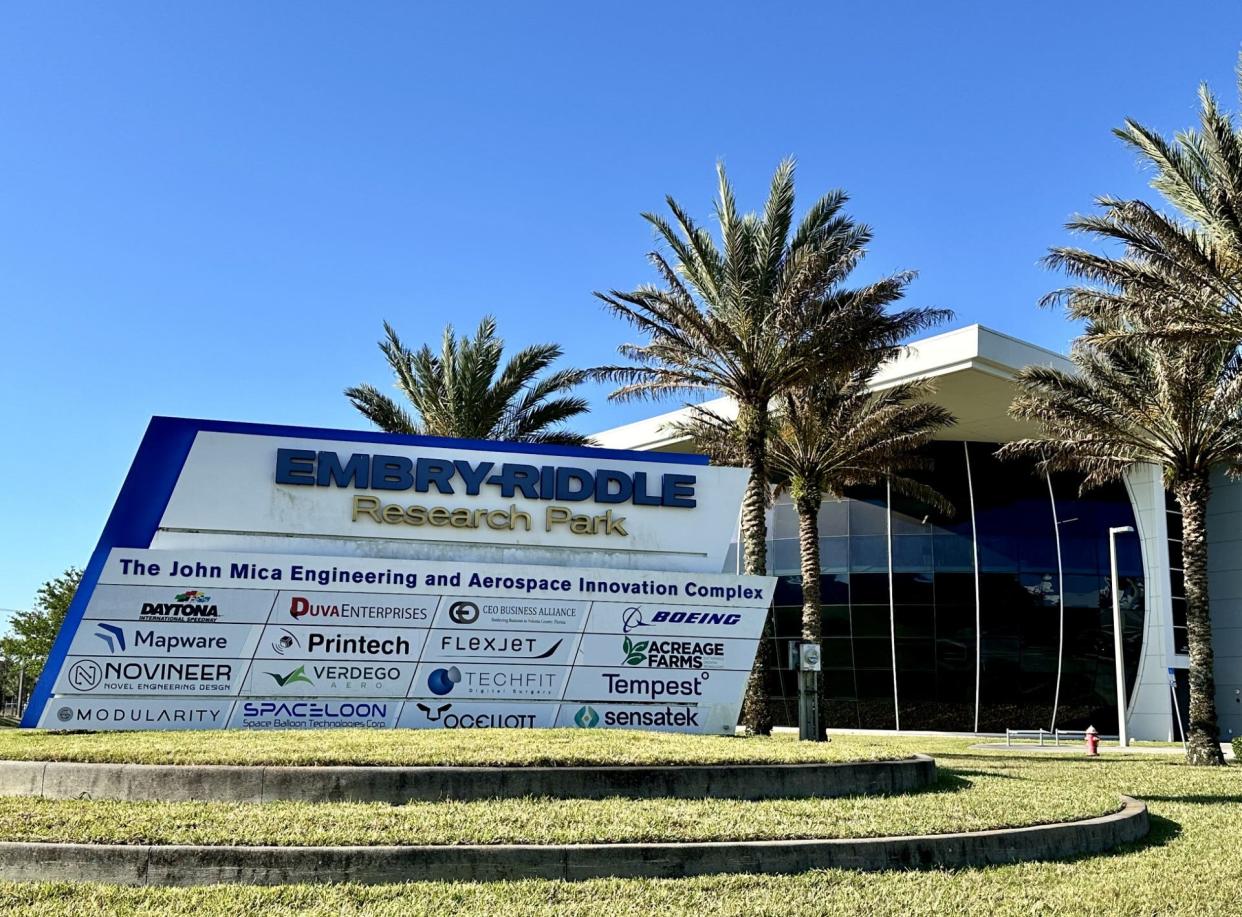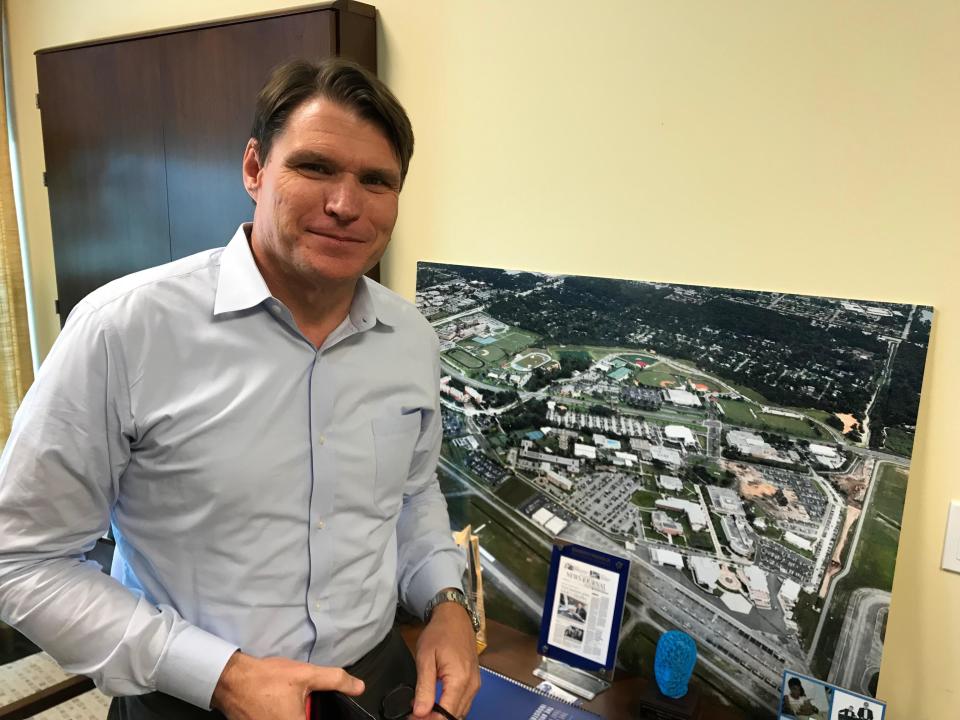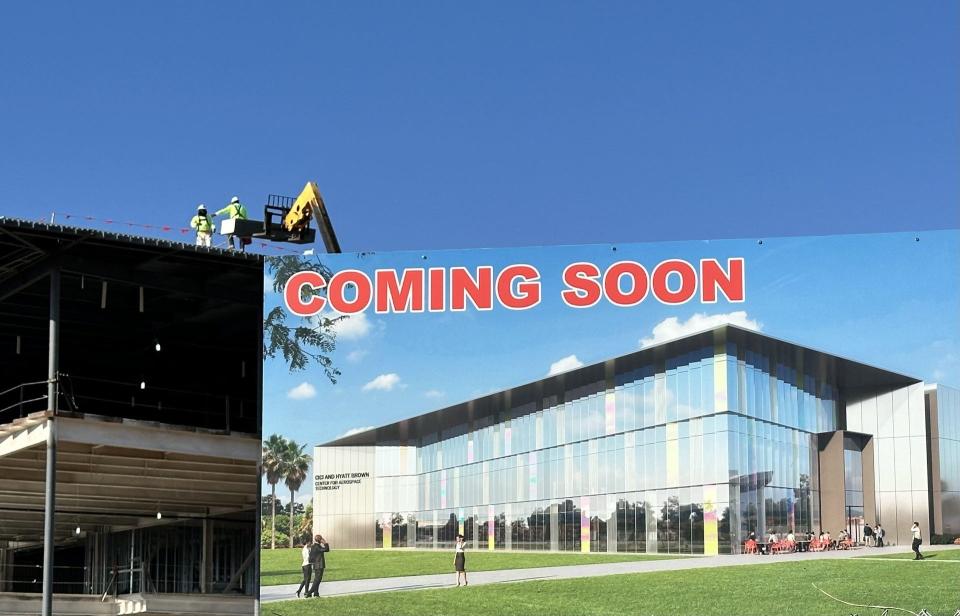Lawmakers put up $26 million to fund 'bleeding edge' hypersonic research at Embry-Riddle

- Oops!Something went wrong.Please try again later.
Hypersonic research could well be the next frontier for Embry-Riddle Aeronautical University's seven-year-old research park.
Florida lawmakers included $26 million in the state budget for the construction of a building where ERAU and University of Central Florida faculty can advance hypersonic technologies, which are used in the development of blazing-fast weapons and spacecraft.
Gov. Ron DeSantis has yet to sign the budget and has the authority to veto projects.
"It really is a very, very unique opportunity for the University of Central Florida and Embry-Riddle to come together to ... work collaboratively on what is one of the most pressing and interesting industry problems that is out there today that impacts every single thing when it comes to space and travel," Rodney Cruise, senior vice president and chief operating officer at Embry-Riddle, said in an interview Tuesday.

Cruise declined to go into detail about the "opportunity," but shared a journal article that cites a need for more hypersonics research facilities.
“Success in experimental hypersonics would result from testing in a variety of different facilities in order to benefit from the advantages of each facility," according to a Progress in Aerospace Sciences article written by researchers Sangdi Gu and Herbert Olivier.
Original request was $1.5 million
The line item in the state budget listing the ERAU project references "Technology Focused Ecosystem at the Research Park," asking for $1.5 million and was sponsored by Rep. Chase Tramont of Port Orange and Sen. Travis Hutson of St. Augustine. Neither Tramont nor Hutson said they had more information about the changed budget amount, saying that the change occurred after their role in the process.
The Legislature's public information office has yet to respond to a request for any documentation of the new budget amount, and the University of Central Florida − originally contacted for comment on Friday − has yet to respond.
When the opportunity to work in hypersonic technologies arose, Rep. Tom Leek, the House appropriations chair whose district includes Daytona Beach, was among lawmakers quick to respond.
"It was very simple for me," Leek said in a text message. "There was an opportunity to bring high tech, high paying, clean energy jobs to Volusia County, and a remarkable partnership between UCF Daytona and ERAU. I was happy to make it a reality."
Hypersonic technology re-emerging
Hypersonic means faster than Mach 5, or five times the speed of sound. Hypersonic weapons can travel between five and 25 times the speed of sound, or about one to five miles per second. The technology is not new but a hypersonic arms race has emerged between the U.S., China and Russia.
Seventy-five years ago, in White Sands, New Mexico, a V-2 rocket was launched. Atop it was a WAC Corporal rocket developed by the Jet Propulsion Laboratory at the California Institute of Technology. In flight, the Corporal was launched in a second stage and became the first hypersonic aircraft.
A February report by the Congressional Research Service states that the Pentagon significantly boosted its request for funding of hypersonic research, from $3.8 billion in 2022 to $4.7 billion the following year.
'Bleeding-edge research'
When asked whether the research planned for the ERAU/UCF collaboration was related more to space travel or weapons and national defense, Cruise responded: "Yes." As in all of the above.

"This is bleeding-edge research. This research will be the future of aviation/aerospace and defense and we believe that the unique partnership with UCF will help further the talent pipeline," Cruise said. "Expanding knowledge is absolutely key in this field and that's exactly what the research facility would do."
ERAU's research park was chosen as the site because it is next to Daytona Beach International Airport and Space Coast companies, he said.
"I think when you marry us with UCF, the potential becomes exponential," Cruise said. "By bringing our two entities together in a thoughtful way if they have a niche that they have been exploring and we have a niche that we've been exploring, let's explore them both together and truly increase the body of knowledge on the topic."
Big Boost: Hyatt and Cici Brown give $25M to expand Embry-Riddle research park in Daytona
This article originally appeared on The Daytona Beach News-Journal: Embry-Riddle, UCF to build hypersonic research facility in Daytona

